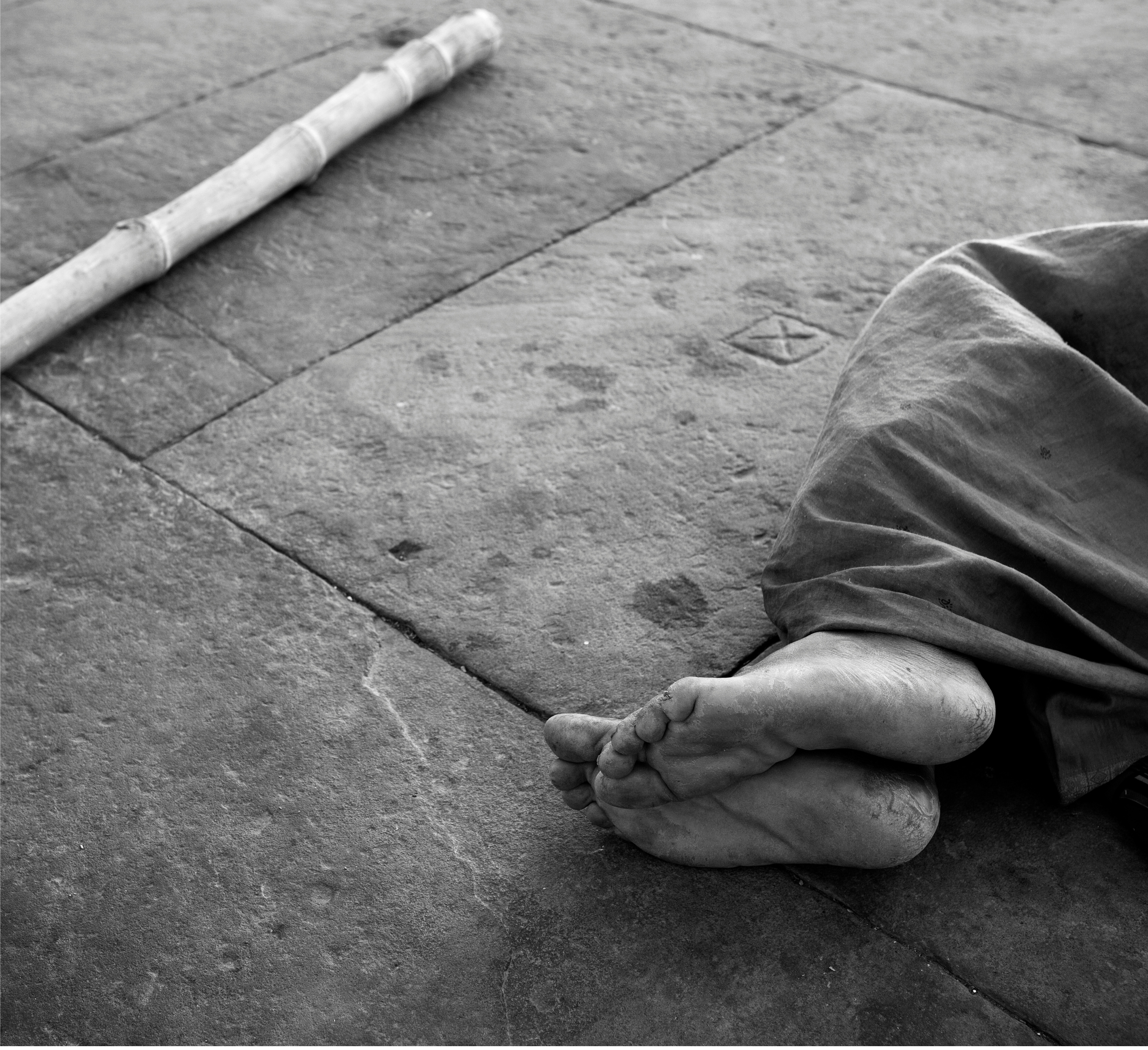Eleventh Sunday after Pentecost
The Sabbath Given, Embodied, and Shared
Luke 13: 10-17
Eleventh Sunday after Pentecost
Analysis by Matthew M. DeLoera
10 Now he was teaching in one of the synagogues on the Sabbath. 11 And just then there appeared a woman with a spirit that had crippled her for eighteen years. She was bent over and was quite unable to stand up straight. 12 When Jesus saw her, he called her over and said, “Woman, you are set free from your ailment.” 13 When he laid his hands on her, immediately she stood up straight and began praising God. 14 But the leader of the synagogue, indignant because Jesus had cured on the Sabbath, kept saying to the crowd, “There are six days on which work ought to be done; come on those days and be cured, and not on the Sabbath day.” 15 But the Lord answered him and said, “You hypocrites! Does not each of you on the Sabbath untie his ox or his donkey from the manger, and lead it away to give it water? 16 And ought not this woman, a daughter of Abraham whom Satan bound for eighteen long years, be set free from this bondage on the Sabbath day?” 17 When he said this, all his opponents were put to shame; and the entire crowd was rejoicing at all the wonderful things that he was doing.
Jesus embodies the true Sabbath itself, by not just reminding us of God’s liberation, but actually doing it to us—forgiving us all our sins. Further, this comes not by any effort of our own, but by Jesus’ own choice.
DIAGNOSIS: Inconvenient Truths Ignored
Step 1: Initial Diagnosis (External Problem): We’re Inactive
While teaching in a synagogue on the Sabbath, Jesus catches a glimpse of a woman suffering from an oppressive “spirit” that has debilitated her for many years. Though we don’t know the full extent of her symptoms, we can see that she is bent over to an unnatural degree, which surely causes her great physical pain. In turn, she has likely become incapable of many activities—though somehow she still manages to come to the synagogue, at least on this day. Perhaps she has heard that Jesus would be there, and might be able to help her?
It’s hard to imagine that anyone who’s able wouldn’t take action on her behalf, and Jesus certainly obliges without even being asked. Likewise, who wouldn’t celebrate such a miraculous and undeniably good deed? Yet, the leader of the synagogue becomes surprisingly enraged, and condemns Jesus for violating the Sabbath restriction.
Step 2: Advanced Diagnosis (Internal Problem): We’re Inured
Why would the leader express such negativity in the face of unmitigated good? Supposing he is well-trained, it seems like a reach to suggest that he remembers Exodus 20:10: “But the seventh day is a Sabbath to the LORD your God; you shall not do any work.” If so, he completely forgets Deuteronomy 5:15: “Remember that you were a slave in the land of Egypt, and the LORD your God brought you out from there with a mighty hand and an outstretched arm; not to mention Mishnaic concessions: “Does not each of you on the Sabbath untie his ox … and lead it away to give it water?”
It also seems too convenient (and perhaps a bit anti-Semitic) to dismiss the situation, as some theologians might, as just another instance of religious leaders appropriating religious observances like the Sabbath as a means of social control and oppression, and perhaps picking and choosing scriptures to justify that control. Granted, we know this happens all too often. But “the entire crowd was rejoicing at all the wonderful things that he was doing.” So, when the synagogue leader kept saying to the crowd, “There are six days on which work ought to be done … not on the Sabbath day,” his objection sounds buffoonish. Finally, the miracle speaks infinitely louder.
On the other hand, Luke sees fit to mention that the woman has been suffering for eighteen years (a lifetime with respect to chronic pain), perhaps since before this particular synagogue leader ever took office. How many leaders and worshipers have come and gone and only known this woman by (or as) her infirmity? So, perhaps everyone has just become inured to her suffering, writing her off as “just the way things are” and pushing her to the side. After all, this isn’t an emergency. She’s dealt with it this long, so surely, she can wait another day, while “heavenly” things become the higher priority. She seems more like an inconvenience than anything else.
Step 3: Final Diagnosis (Eternal Problem): We’re Thrown Out
Now, it’s not that we don’t feel guilty for pushing inconvenient realities to the side. Yet, we accept the status quo (the devil or “spirit” we know) because it seems to demand less of us, even though it’s killing folks. And in seeking to justify our neglect or self-centeredness, how often do we read scripture a little too selectively? (“For you always have the poor with you, and you can show kindness to them whenever you wish,” Mark 14:7. “Slaves, obey your earthly masters with fear and trembling,” Eph. 6:5. “Let every person be subject to the governing authorities,” Rom. 13:1. “But the seventh day is a Sabbath to the LORD your God; you shall not do any work,” Exod. 20:10.) If we’re honest, can any of us deny that we’re not hypocrites who inevitably appropriate the Word of God for our own ends? On the one hand, Jesus has warned us about what happens to hypocrites: they will be “cut in pieces and put with the [other] hypocrites, where there will be weeping and gnashing of teeth” (Matt. 24:51). But on the other hand, what hope have we got when the word of God is so routinely misappropriated?
PROGNOSIS: Overwhelming Gifts Savored and Shared
Step 4: Initial Prognosis (Eternal Solution): Sabbath Given
We have much hope, for God promises us, “So shall my word be that goes out from my mouth; it shall not return to me empty, but it shall … succeed in the thing for which I sent it” (Isa. 55:11). We witness this in Jesus Christ, the Word made flesh. Jesus embodies the true Sabbath itself, by not just reminding us of God’s liberation, but actually DOING it to us—forgiving us all our sins. Further, this comes not by any effort of our own, but by Jesus’ own choice. The woman did not have to ask Jesus for healing, Jesus did what was necessary. In this same way, Jesus comes to us with a word that cannot be subjugated or mistaken, precisely because it is so radically unconditional and unrestricted. It won’t wait another day. Hence, with Jesus, every day becomes a Sabbath day graciously given to us.
Step 5: Advanced Prognosis (Internal Solution): Sabbath Embodied
As Jesus has said, “The sabbath was made for humankind, and not humankind for the sabbath” (Mark 2:27). Jesus frees the woman from both a spirit of possession and a doctrine that results in oppression. “Immediately she stood up straight and began praising God.” She is no longer contorted by prohibitions that only impede life. She can once again live and move and experience her full being in God. And no matter what the religious leaders at hand might think, she is the antithesis of an inconvenience. She has become the very embodiment of good news for all people.
Step 6: Final Prognosis (External Solution): Sabbath Shared
The woman’s joy spreads throughout the entire crowd, which begins “rejoicing at all the wonderful things that [Jesus] was doing.” Likewise, the Sabbath so overwhelms us with God’s abundance and grace, that we’re desperate to share it. So, the Spirit keeps us on the lookout for anyone in need of healing or empowerment. And we don’t restrict this to specific times or places or days, but every day and everywhere, by the unbounded Spirit of God.

